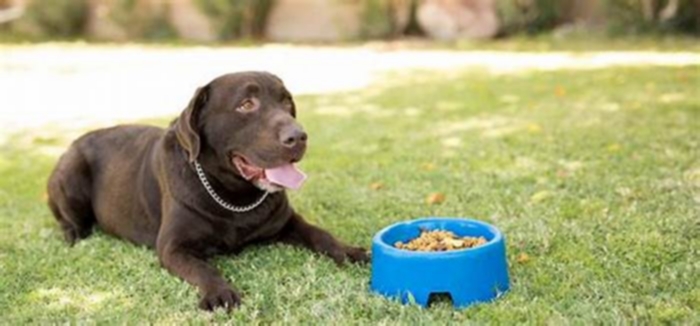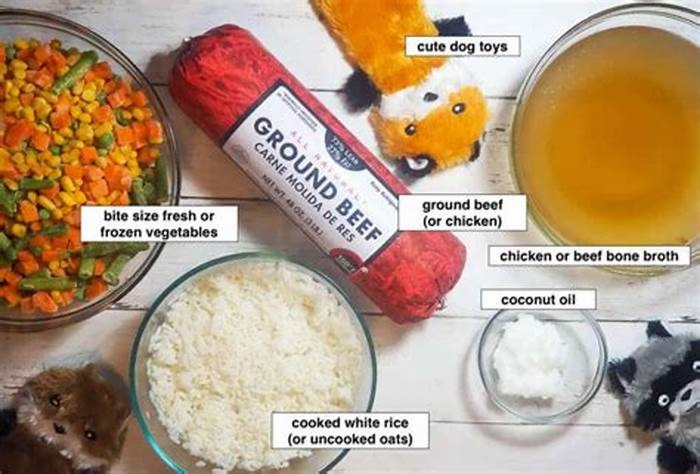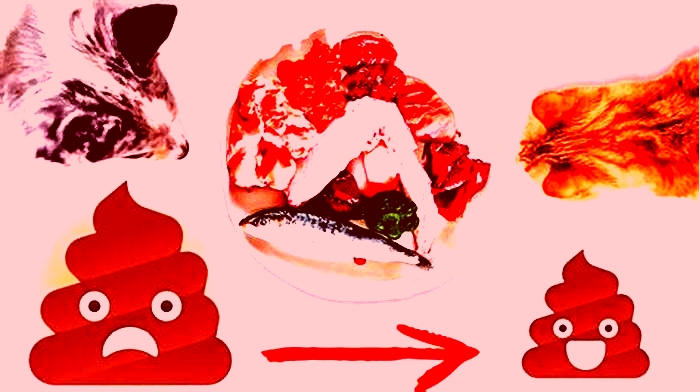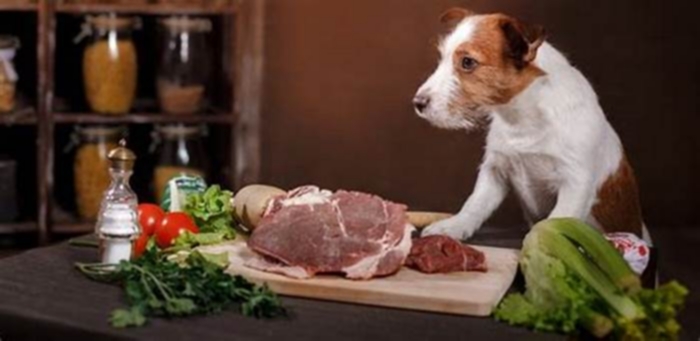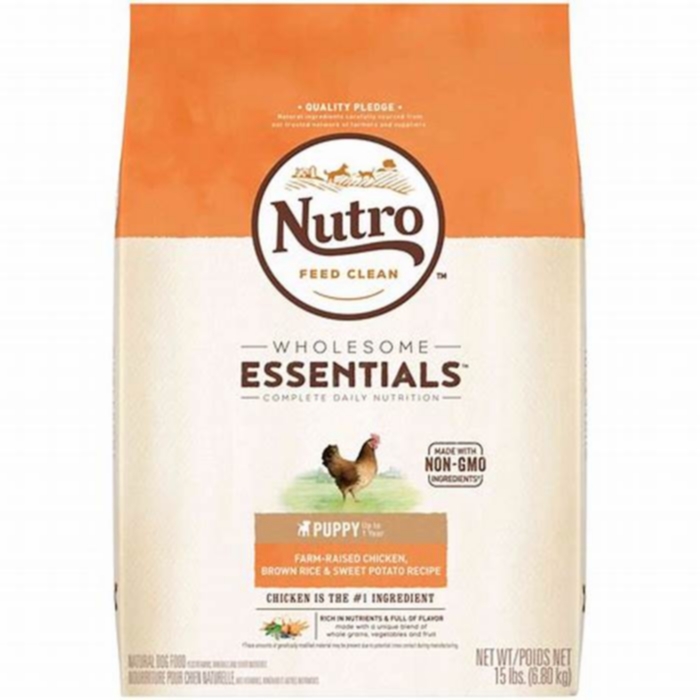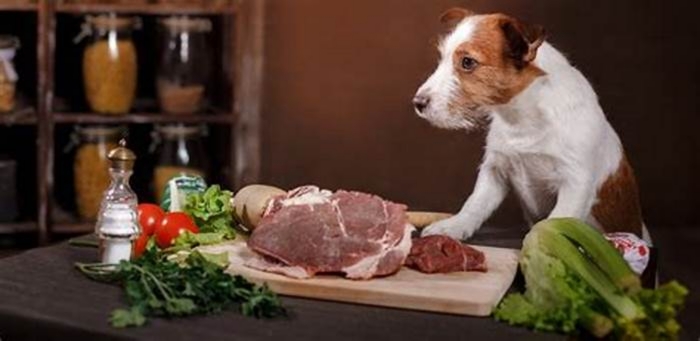Why is raw food bad for dogs
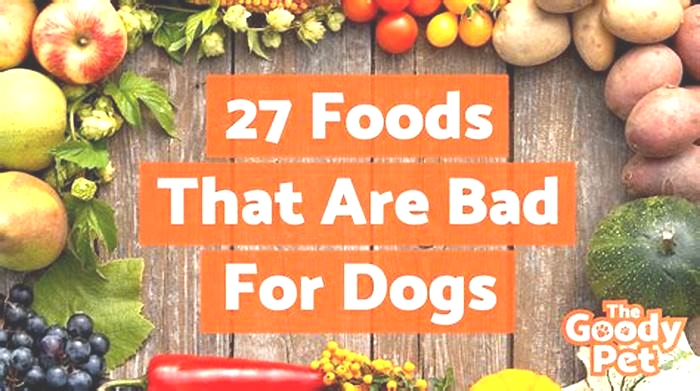
Dangers of Raw Diets for Dogs
"Should I feed my dog a raw diet?" If you've ever heard another pet parent rave about how his or her dog appears to be thriving on a raw meat diet, you might be asking yourself this question. Proponents of raw diets for dogs point out that dogs are biologically similar to carnivorous wolves, and claim that the benefits of this type of diet include healthier skin, coat and teeth, more energy and smaller stools, according to PetMD. However, there is very little scientific evidence to support these claims. In fact, most of the scientific research on raw meat diets for dogs shows that they could do more harm than good.
Dogs Are Not Wolves
 It's a fairly common belief that because dogs are descended from wolves, they should eat a diet similar to that of their wild ancestors. Because wolves are carnivores meaning that they solely eat meat it's often assumed that dogs should also be fed a carnivorous diet.
It's a fairly common belief that because dogs are descended from wolves, they should eat a diet similar to that of their wild ancestors. Because wolves are carnivores meaning that they solely eat meat it's often assumed that dogs should also be fed a carnivorous diet.
The problem with this assumption is that dogs are genetically different from wolves, says Science Magazine. Dogs split off from wolves and became domesticated thousands of years ago. Since then, they have evolved alongside humans to be able to eat much of what humans eat. In a study published in Nature, genetic researchers found clear evidence that dogs have genetically adapted to eat a diet consisting of meats and starches. Feeding your dog nothing but raw meat as though he's a tame wolf has the potential to deprive him of vitamins and nutrients that are vital to his health. Such a diet could pose serious health risks not only to dogs, but also to people.
Dangers of Raw Diets for Dogs
A two-year study conducted by the U.S. Food and Drug Administration from 2010 to 2012 found that raw pet food is more likely than other types of pet food to carry bacteria, including Salmonella and Listeria monocytogenes that cause food borne illnesses. This study prompted the FDA to issue a warning about the public health risks of raw pet food diets. Not only that, but veterinary organizations, like the American Animal Hospital Association, officially recommend against feeding raw meat-based diets to dogs, as does the American Veterinary Medical Association (AVMA).
While it's possible that your dog could get food poisoning from eating raw meat infected by Salmonella, E. Coli, or other disease-causing bacteria, it's more likely that your dog could himself become a carrier, says The Whole Dog Journal. A dog's stomach acid may neutralize infectious bacteria before they make him sick, but there's a chance he could still pass the bacteria to other dogs or people he comes into contact with. What's even more troubling is that a 2011 study in The Canadian Veterinary Journal found that much of the Salmonella found in dogs fed raw meat diets was a type that's resistant to antibiotic drugs.
Another worry of raw diets is obstruction from any bones or other solid artifacts that are not properly removed from the food. These can cause choking or intestinal damage to your pup. Finally, raw diets are not properly balanced to provide your dog with the adequate levels of calcium, phosphorus and vitamin D that are essential to a growing dog's development. For instance, without the right amount of calcium, your puppy could develop skeletal problems.
Balanced Nutrition
 Of course, another important criticism of raw diets for dogs is the lack of balanced nutrition. For healthy dogs that aren't dealing with health problems that require a specialized diet, the American Society for the Protection of Cruelty to Animals recommends feeding a diet with the right balance of protein, water, fats, carbohydrates, vitamins and minerals. High-quality dog foods are formulated specifically to meet these needs in the correct amounts. What's more, a dog's nutritional needs change as he goes through different life stages. Dog foods are typically specifically suited to each stage of your pet's development.
Of course, another important criticism of raw diets for dogs is the lack of balanced nutrition. For healthy dogs that aren't dealing with health problems that require a specialized diet, the American Society for the Protection of Cruelty to Animals recommends feeding a diet with the right balance of protein, water, fats, carbohydrates, vitamins and minerals. High-quality dog foods are formulated specifically to meet these needs in the correct amounts. What's more, a dog's nutritional needs change as he goes through different life stages. Dog foods are typically specifically suited to each stage of your pet's development.
Proponents of raw food diets claim that their dogs' skin and coats showed improvements after switching to raw meat diets; however, it's possible that any previous skin problems occurred from low-quality pet food, an environmental factor no longer around, or negative reactions to an ingredient in one brand of dog food. Instead, switching their dogs to a high-quality dog food may lead to similar improvements while ensuring that their dogs receive the proper balance of nutrients.
Raw Diet Safety
In spite of the risks and the lack of scientific evidence supporting the health benefits of a raw food diet, many people still insist that a raw diet is the healthiest way to feed their dogs. If you're not convinced that raw diets for dogs should be avoided, here are some safety guidelines recommended by the FDA to help reduce the risk of contamination to you and your dog.
- Avoid touching your face or mouth while handling raw pet food.
- Thoroughly wash your hands with soap and water after handling raw meat.
- Clean and disinfect all surfaces, utensils and other objects that came into contact with the raw pet food. The FDA recommends washing the surface with soap and water and then following with a solution of one tablespoon of bleach to one quart of water.
- Freeze raw meat or poultry until you're ready to use them (freezing does not guarantee killing of all the bacteria. Salmonella and E. Coli can often be resistant to cold temperatures). Thaw raw meat in your refrigerator or microwave, not in the sink or on the countertop.
- Carefully handle raw meat or poultry to avoid spreading raw juices to other areas.
- If your pet doesn't finish his food, immediately refrigerate or carefully dispose of the leftovers.
- Avoid kissing your dog on or near his mouth, and don't allow him to lick your face.
- Be sure to wash your face and hands after handling or being licked by your dog.
It's also a good idea to wear disposable gloves while handling your dog's food and to feed him on disposable plates. Because young children and the elderly are especially susceptible to foodborne illnesses, they should never come into contact with this type of dog food.
Your pet's stool is also a potential source of contamination. Be sure to collect and safely dispose of your dog's stool, taking care not to come into contact with it. Thoroughly wash your hands with soap and water when you're done.
With this evidence in hand, you can confidently answer "No" the next time you hear the question "Should I feed my dog a raw diet?" While the enthusiasm of raw diet proponents can be alluring, the safety of your dog and the people in your household should be your highest priority. If you're still not sure, talk to your veterinarian about the best type of food to feed your dog.
Contributor Bio

Jean Marie Bauhaus
Jean Marie Bauhaus is a pet parent, pet blogger, and novelist from Tulsa, Oklahoma, where she usually writes under the supervision of a lapful of fur babies.
Is Rawhide Bad for Dogs?
There are hundreds, if not thousands, of rawhide products available to buy for our dogs in every shape and size. Dogs love them, people buy them, and pet shops continue to sell them so they must be good right?
Not necessarily! There are several reasons why you should think twice before buying them for your dog.
Recently, rawhide has come under scrutiny for its potential risk to dogs health, despite being a popular treat for pet parents to give their dogs. Not only can the ingredients be questionable, but the chewing and digestion of rawhide can be dangerous due to its consistency and production methods.
The American Society for the Prevention of Cruelty to Animals (ASPCA) has even discouraged the consumption of rawhide for dogs. Read more to learn why its best to avoid rawhide when choosing a treat for your dog to chew on.
This article will teach you more about the risks of choosing rawhide as your dogs treat.
What is rawhide?
Rawhide is the dehydrated inner layer of cow or horse skin (hide). The outer layer of hide is used by the leather industry to make shoes, clothes, bags, etc., while the inner hide is treated, bleached, artificially colored, and eventually manipulated into products, such as the dog chews you may be familiar with.
What are the dangers of rawhide?
Although rawhide provides a satisfying chew for a dog, and chewing is important for a dogs dental health, there are multiple risks.
Rawhide is produced using chemicals
The process of turning animal rawhide into dog chews is lengthy. First, the hide is dipped into brines with a high salt content to slow down decay.
Its then cleaned with detergent, degreasers, and sterilized with hydrogen peroxide before the hair and/or fat is removed using strong chemicals. More chemicals are used to separate the layers of skin.
Many rawhide chews are produced in China, and it may take several months for these preserved hides to reach the tanneries for their final processing.
When they reach the final stage, artificial colors or flavors are sometimes added in the final stages to make the rawhide more appealing, and glue may be used to create fun shapes.
There was even a mass recall of several rawhide products a few years back due to chemical contamination: United Pet Group / United Pet Group Recall Expansion
It should be noted that there are some rawhide suppliers who claim to use more natural processing methods and if you are purchasing rawhide, try to find one manufactured in the USA.
Rawhides made in the United States can be harder to find, and pricier than your average rawhide chew, but the benefits are worth the cost.However, the manufacturing process wont mitigate the following risks
Rawhide can cause intestinal obstruction
Rawhide was created to be chewed, not eaten, so it is highly indigestible. If your dog swallows large pieces of rawhide, it could very easily cause a blockage in their gastrointestinal tract and cause damage to the intestines.
Symptoms of this include vomiting and diarrhea, so if you notice your dog showing these symptoms, see a veterinarian immediately. Your dog may require surgery to have these pieces removed. Smaller pieces of rawhide may be broken down by stomach acid but could also cause a problem in large quantities.
Rawhide is a choking hazard
If large pieces of rawhide become lodged in a dogs throat, this could become highly dangerous and potentially fatal. Rawhide becomes softer and stringier the more it is chewed, so it could easily break into pieces which are easier to swallow. This is when it could become stuck in the esophagus and cause a dog to choke.
Rawhide also becomes slimy when chewed which adds to the risk and makes it difficult to remove from the throat. Its such a well-known choking hazard that some dog first aid courses include how to remove rawhide in their modules.
It doesnt suit your dogs type
As with most chews, your dogs type will impact how safe it is. Although rawhide can break into smaller pieces, if your dog is a larger breed with a strong chew, they are likely to break off larger pieces which can be a choking hazard. Whereas it can be safer for smaller breeds who are soft chewers and can nibble on smaller pieces. If you are buying rawhide, choose appropriately sized treats and monitor closely.
Rawhide can damage a dogs teeth
Some forms of rawhide are very dense and rigid, making them hard to break down for dogs. Although rawhide can be a given to dogs as a dental treat and to keep them entertained, hours of chewing a hard and brittle object could actually cause damage to their teeth.
Rawhide can become contaminated
Although unlikely, as rawhide is an animal-meat based product, it carries contamination risks, including with bacteria such as E.coli or salmonella.
What can I give to my dog instead of rawhide?
Rawhide is designed to keep dogs entertained and satisfy their urge to chew. Theres a whole range of healthier alternatives, such as sweet potato chews, carrots, and toys. For some options you could check out our Best Dental Chews and Best Dog Treats. Some are tougher and longer-lasting than others, and they come in a huge variety of shapes, sizes, and flavors.


